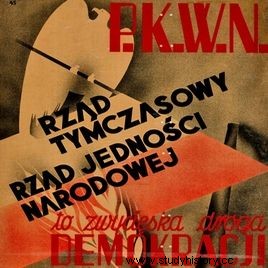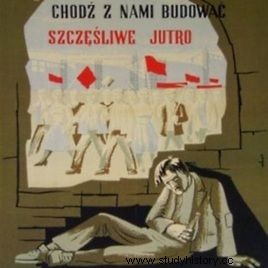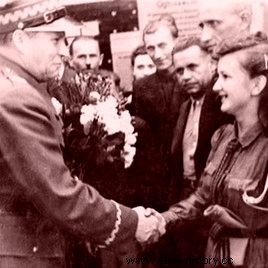Polish communists deliberately pretended to be devout Catholics. The Soviets dismantled and stole everything they could. And ordinary Poles organized 1,200 strikes forgotten by history. In 10 points we show what the construction of the People's Republic of Poland really looked like.
As always, all TOP10 items are based on the articles we publish. This time, these are texts describing the first post-war years in our country, i.e. the period of the formation of the so-called People's Poland.
You probably didn't know that:
 | 10. | The allies wanted to rob us. It was close and Poland would lose its eastern lands and get nothing in return. All because of the opposition of the Americans and the British who believed that the so-called "reclaimed lands" should remain part of Germany. Winston Churchill even claimed that the Russian-dominated Polish government was encouraged to make huge and harmful annexations at the expense of Germany (read more about this). |
 | 9. | The freemasons were very active in helping to strengthen the people's power . More than 40% of the brothers occupied high positions in the state administration. One in three became a lecturer at a university. Almost 10% came to the highest offices in the cooperative (read more about it) . |
 | 8. | It's a fiction that Poles didn't fight communists. In the first years of People's Poland, a huge wave of strikes was sweeping through the country. In 1946 alone, 340,000 workers protested, and by 1948 there had been a total of roughly 1,200 strikes across the country (read more on this). |
 | 7. | In the early days of their rule, Polish communists maintained that ... they were not communists at all. To be credible, longtime party activists openly criticized, for example, the traditions of the pre-war KPP. They gladly participated in church services. This was to win the sympathy of distrustful citizens (read more on this). |
 | 6. | Immediately after the war, communist intelligence used whatever it could. They did not even hesitate to reach for the Germans who remained in Poland. Sometimes they proved to be extremely useful. This was the case with Alice Kraffczyk, who fully deserved to be called the best spy of the People's Republic of Poland (read more about it). |
 | 5. | In 1944-1946, the Soviets plundered our country enormously. If we add to this the non-war damage done by the Red Army, it turns out that only in central and eastern Poland losses amounted to as much as 54 billion current dollars (read more on this topic). |
 | 4. | On the occasion of the zloty denomination in 1950, the communists stole 2/3 of their savings from Poles. All due to the unfavorable conversion rate of the funds accumulated so far. In addition, the penalties for foreign exchange offenses have been tightened . The mere possession of foreign currencies threatened with 15 years of imprisonment, and trading with the death penalty (read more on this topic). |
 | 3. | Only a month after the surrender of the Third Reich, the Polish-Czechoslovak war almost broke out. Both the Czechs and Poles were determined to fight for Kłodzko, Zaolzie and Racibórz. Were it not for Stalin's intervention, the Polish Army would almost certainly have entered Czechoslovakia` (read more on this). |
 | 2. | In 1944-1948, Jews constituted 1/3 of the top management of the Polish Workers' Party. There were 35% of them in the entire leadership structure of the party. However, keep in mind that these people had very different attitudes towards their roots (read more about this). |
 | 1. | In 1951, Poland made a border adjustment with the USSR, which cost us tens of billions of dollars. The subject of the exchange was the coal-rich knee of the Bug. In return, we received a scrap of the Bieszczady Mountains with exhausted oil deposits (read more on this topic). |
